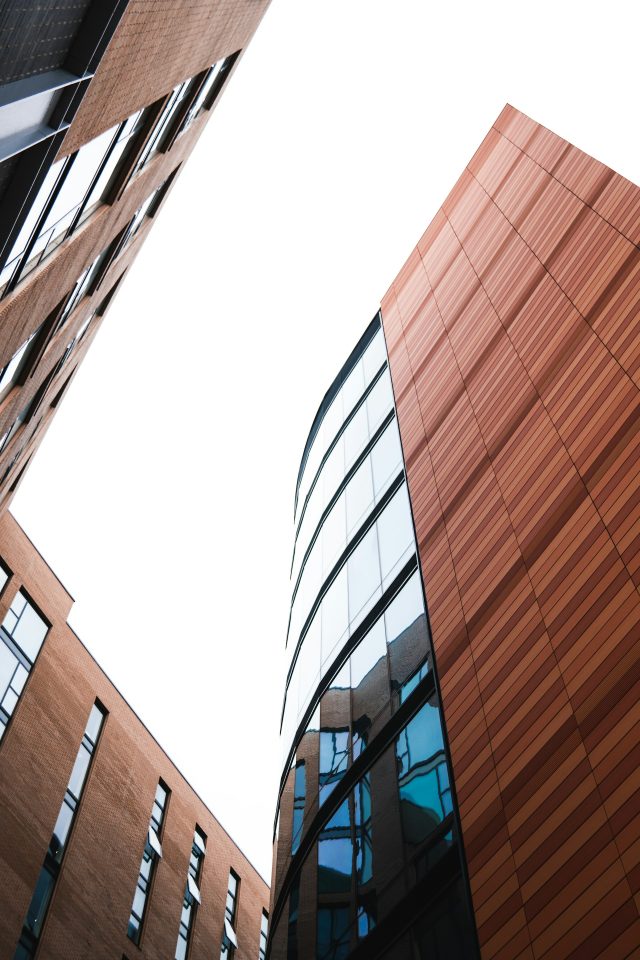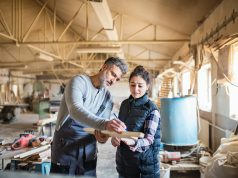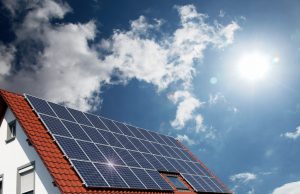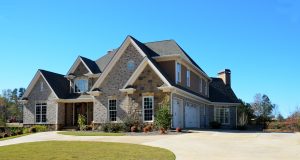
As commercial buildings age, exterior cladding systems often require refurbishment to repair damage, restore functionality, and improve aesthetics. While complete replacement of aged cladding is an option, it is costly and disruptive to business operations.
As such, modern techniques have emerged that allow commercial buildings to undergo refurbishment of their existing commercial cladding in situ. Studies have shown that energy-efficient buildings with proper cladding can save up to 30-50% on heating and cooling expenses.
By leveraging innovative materials and minimally invasive installation methods, today’s refurbishment projects can rejuvenate faded facades and enhance building envelopes without the heavy expense or downtime of full replacement.
This introduces property owners to a more practical and economical means of refreshing their commercial cladding to like-new condition and extending the usable lifetime of their structures.
The Rise of Eco-friendly Cladding Materials
In recent years, there has been a noticeable shift toward more sustainable choices in commercial cladding. Building owners and architects increasingly specify materials with superior environmental credentials.
Eco-friendly options like recycled aluminium, mineral wool insulation, and cement panels from industrial waste embrace reduced embodied carbon and energy efficiency principles. Some utilise renewable or rapidly replenished resources. Their properties allow thinner, lighter builds versus traditional materials.
Production and application of these ‘green’ cladding solutions also generate fewer emissions. As performance matches or exceeds alternatives while lowering long-term costs, eco-conscious cladding is becoming the option for new construction and refurbishment projects.
Exploring Commercial Cladding: Cutting-Edge Refurbishment Techniques
Modern techniques in commercial cladding refurbishment offer effective and sustainable ways of improving building exteriors’ appearance, performance and durability. Here are some techniques commonly used during refurbishment work:
● Cladding Overcladding
One modern technique gaining popularity is cladding over-cladding, also known as rain-screen retrofit. This involves installing a new outer skin of cladding over the existing façade.
A layer of rigid insulation is first attached to create a drained cavity. Then, a new rain-screen cladding material like composite panels or fibre cement is mechanically fastened. This provides an energy-efficient façade without removing and replacing deteriorated cladding fully.
Overcladding minimises construction waste and is less disruptive than outright replacement. It can transform the looks of a building while extending its functional lifespan.
● Rainscreen Cladding Systems
Rainscreen cladding systems have emerged as a best practice for commercial building envelopes. They utilise an outer skin of lightweight material and an inner air cavity. This creates a drained, ventilated space between the cladding and water-resistive barrier.
As rainwater hits the panels, capillary action and wind pressure are reduced, allowing any moisture penetrating to evaporate harmlessly. Many modern refurbishment projects implement rain-screen principles by leveraging innovative cladding substrates like fibre cement or metal composite panels.
Their resistance to moisture safeguards the structure while simultaneously upgrading aesthetics. Rainscreen designs prove highly effective and durable.
● Insulated Render Systems
Insulated render systems offer an alternative cladding approach, well-suited for commercial refurbishment.
A liquid-applied or dry-hanging external insulation material forms a breathable, weather-resistant layer. It is bonded to the exterior from which it derives its strength. Installed in multiple coats, insulated renders provide a seamless, monolithic finish. This enhances thermal performance by significantly improving the building envelope’s U-value.
Such systems are easily applied to numerous substrate types with minimal disruption. They durably protect structures from weathering and damage for decades while lowering energy costs through superior insulation.
● High-Performance Coatings
High-performance coatings deliver top-tier weather resistance and durability for cladding with long-term protective needs. These include elastomeric and 100% acrylic options.
Applied as a smooth finish or textured, they form an integrally bonded skin impervious to water and weathering. Their vapour permeability prevents moisture buildup. Coatings are compatible with multiple base materials from concrete to metal and upgrade older substrates. They provide robust, long-lasting refurbishment suited for severe climates.
The application goes quickly with minimal surface preparation—high-performance coatings greatly extend the functional lifespan of commercial building envelopes cost-effectively.
● Photovoltaic (PV) Cladding
Photovoltaic (PV) cladding systems are an exciting modern trend in commercial building refurbishment.
By directly integrating solar panels into the external building envelope, PV cladding allows structures to generate renewable energy from sunlight while providing an improved cladding solution. These systems are made of semi-flexible thin-film PV materials that can be installed to form innovative new rainscreen designs.
This resembles conventional cladding installation methods where panels are mechanically fastened to a substrate. This dual-purpose approach offers building owners energy generation capabilities to help offset electrical demands through clean solar power while enhancing the cladding through refurbishment.
Frequently Asked Questions
What are the techniques used for installing different claddings?
Here are some common techniques used for installing different types of cladding:
- Stone/terracotta cladding: Usually mechanically fixed through small metal brackets and fixings securely attached directly to the building’s structural framing members or backup wall. Some thin stone is adhesive bonded directly to the substrate.
- Metal cladding can be mechanically fixed with concealed fasteners into light-gauge metal framing or adhesive-bonded systems onto sheathing. Profiled metal sheets are commonly installed over continuous strips of insulation fastened to the substrate.
- Vinyl cladding: Typically comes in interlocking panels that are snap-fit onto vertical zinc strips or aluminium mounting rails. These are then securely attached to the facade at set intervals using concealed fasteners.
How is cladding fixed to buildings?
Here are some common ways that cladding is fixed to buildings:
- Mechanically fixed: It uses metal brackets, hooks, clips, or straps secured directly to the structural framing or sheathing. The cladding panels are then fixed into these brackets/straps.
- Adhesive bonding: Construction adhesives bond the cladding material, such as Terracotta or stone, directly to the sheathing or backup wall.
- Rainscreen principle: A sub-frame of horizontal and vertical rails/battens is attached to standoffs from the building. Cladding is mounted on these using concealed clips, creating an air gap.
Conclusion
In conclusion, modern refurbishment techniques have provided commercial building owners with an excellent alternative to total cladding replacement. The existing envelope can be refreshed like new ones by leveraging minimally invasive installation methods and innovative materials. This saves significantly on costs while causing minimal disruption.
As sustainability in construction rises to the agenda, refurbishment also satisfies the increasing demand for eco-friendly approaches. Looking ahead, continued advances will no doubt further streamline the process and expand the portfolio of cladding types that can be renewed in situ.
Refurbishment is poised to become the preferential solution for enhancing commercial facades as it delivers high performance with unmatched efficiency and environmental friendliness.













